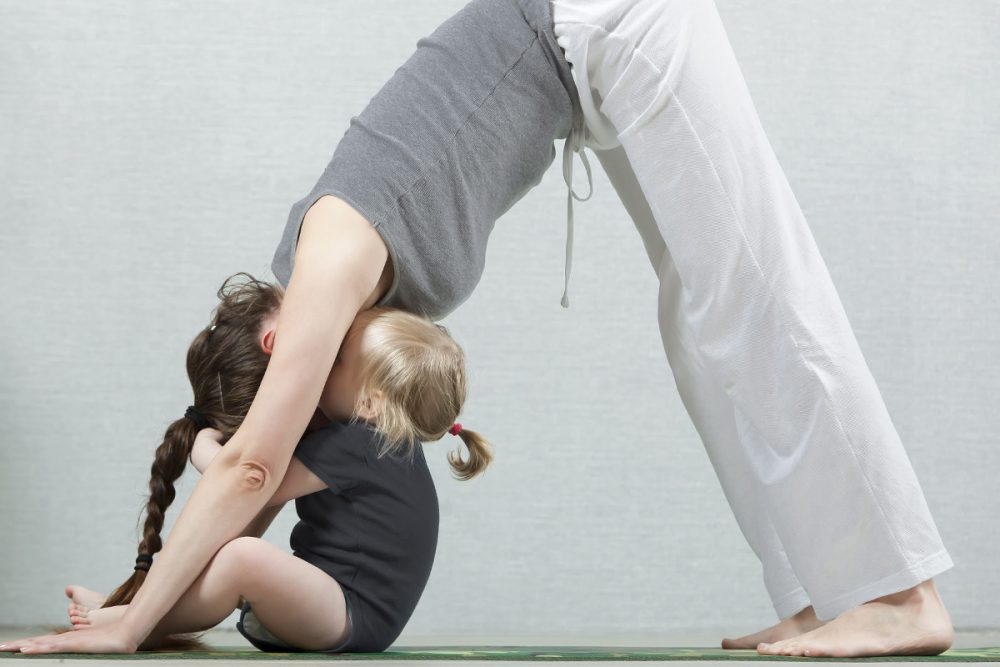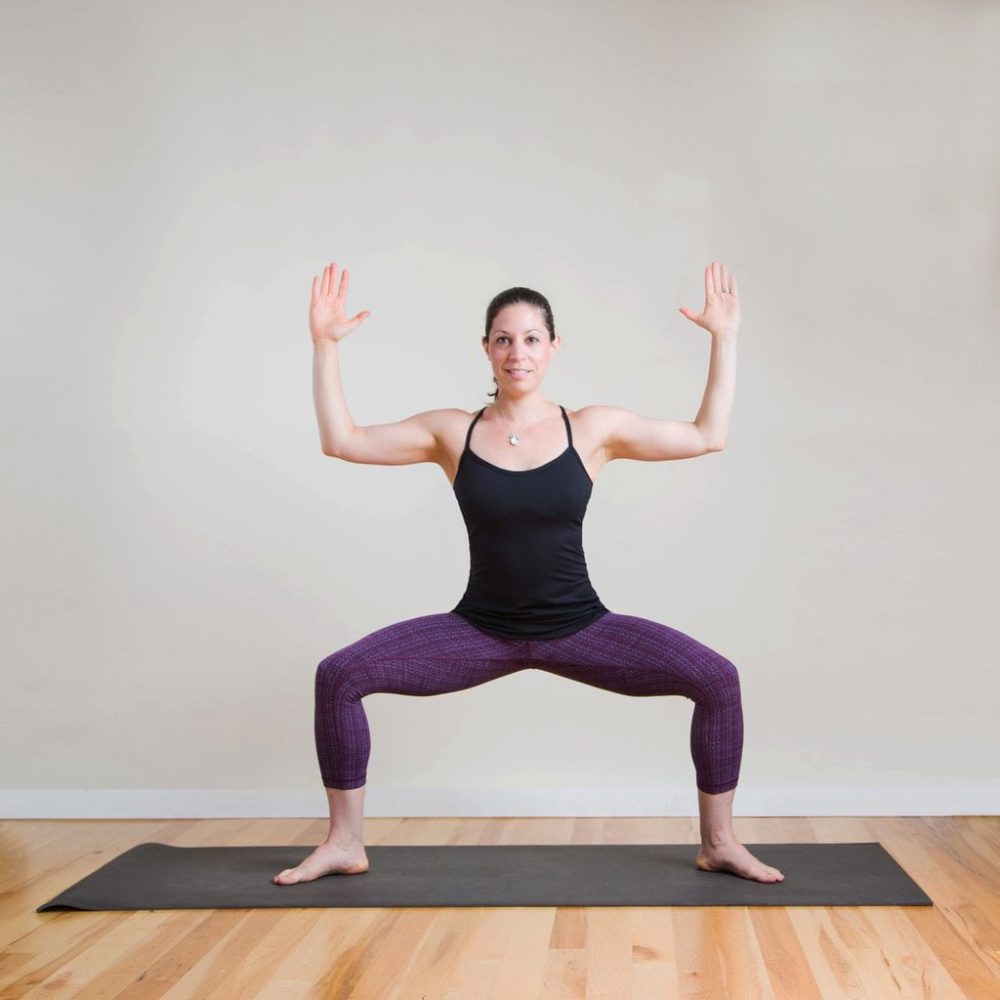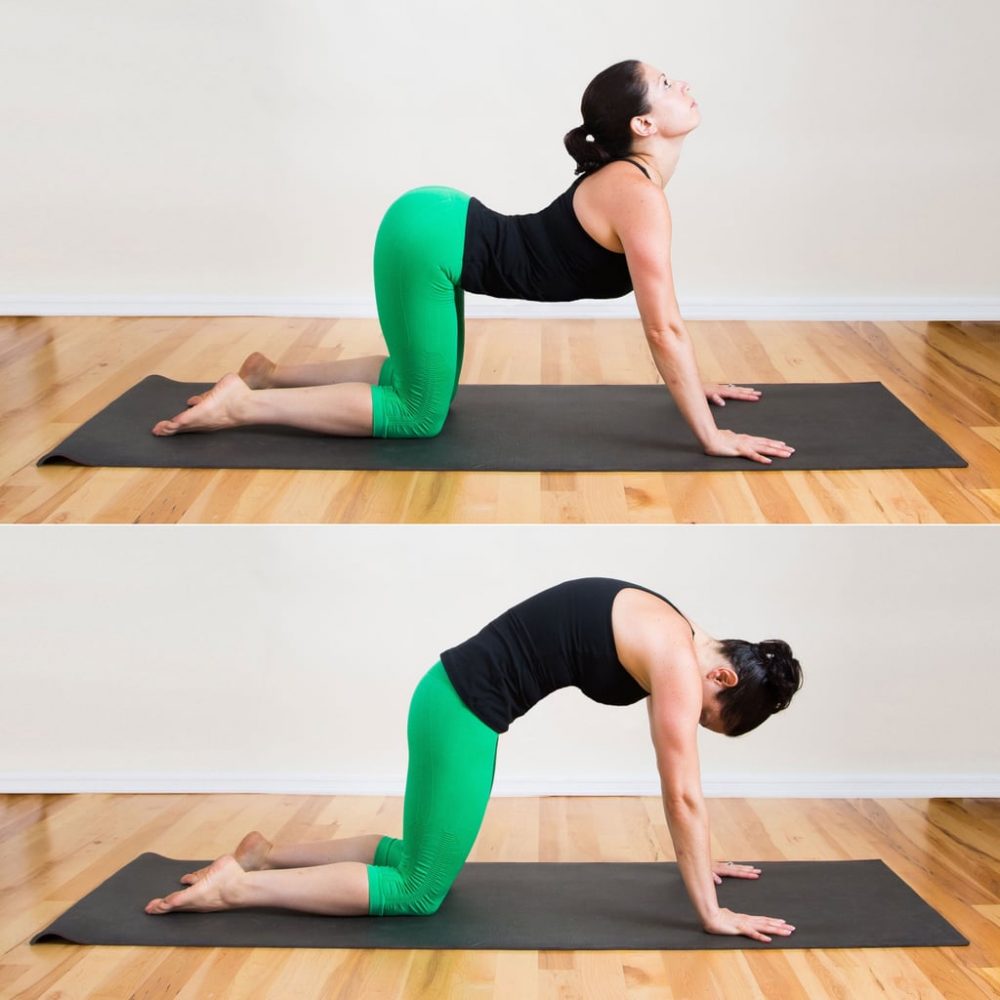Pregnancy is an amazing and beautiful time, where a woman gets the unique and miraculous experience of growing a baby in her uterus. After the birth, whether vaginal or caesarean, the postpartum body needs time and tenderness to rediscover its landscape and recalibrate movement. During pregnancy and in to the postpartum months, a hormone called relaxin affects the laxity of the ligaments in the body, which can make a new mama feel looser in the joints. After giving birth, nursing and holding a baby can lead to a more rounded posture with accompanying tightness.

Add into this equation the stretched out muscles of the abdominal wall and the shifting of the internal organs to accommodate the growing uterus and a postpartum body has a lot to contend with (not to mention sleep deprivation)!
Here are some good exercises to try out as soon as the doctor gives permission, which will differ based on your birth experience and other factors.
1. Lie on your back with your knees bent. Bring one hand to your abdomen and as you exhale out, lightly press your hand down toward the back body. As the hand presses down, engage the muscles underneath the hand as if you were tightening purse strings together. On the inhale, release the muscular contraction. Repeat this for 3 to 5 minutes.
Benefit: reestablishing a connection to the abdominal muscles by using tactile input as well as breath
2. Start in the same position as the first exercise, on your back with your knees bent. Take an inhale and as you exhale tighten again around the belly and then lift the hips up in a low bridge position. Use your hands to tap on your gluteal muscles to ensure that they are contracting. Hold your glute contraction for 10 seconds and then lower to floor, repeating for 1 to 2 minutes.
Benefit: activating the gluteal muscles will help you reestablish a neutral pelvis, which will help with posture and core integration

3. Goddess squats: mamas are the greatest goddesses around and I think these poses were named for the moms out there. Bring your feet wider than hip distance apart and turn the toes out slightly. Bring one hand on your belly and one hand on your low back. Draw the hands together to help consolidate your center and begin to pulse in your goddess squat. Slowly bending and straightening the knees a few inches like a pulse. As you straighten the knees, inhale and lightly draw your SIT bones together to feel part of the pelvic floor muscles engage. As you bend your knees hold the feeling of the pubic bones together and repeat for 1 to 3 minutes.
Benefit: will help with your leg strength, reintegration of the pelvic floor and the core muscles of the trunk and hips.
4. Cat-Cow: come on to all fours with the wrists under your shoulders and the knees under your hips. Use your awareness from being on the floor to try and find a neutral spine, by bringing the abdominal wall up toward the back body. As you inhale, pull your hands back toward your knees energetically and feel the shoulder blades slide toward your hips. On the exhale, push the hands into the floor release the head and lift up between the shoulder blades drawing the center of the belly up into the low back.. Repeat slowly for 1 to 2 minutes, moving from your center and controlling the sinking of the low back.

Benefit: The movement helps you find more freedom in the connective tissue around the spine and ribs, which often becomes tightened with pregnancy.
5. Low lunge with shoulder rolls: From the quadruped position, step your left foot forward to move into a shortened lunge. Bring your hands to the front of your shoulders and clasp around the head of the arm bone, like you are grabbing a ball. Begin to roll one shoulder at a time backwards, moving the shoulder blades and rib cage as well. The movement creates a very small twist through the ribs and helps to mobilize the shoulder joint. Repeat for 1 minute while keeping the right glute muscle contracted and holding in the front body to stabilize the pelvis. Switch to the right side and repeat.
Benefit: The low lunge helps to organize the neutral pelvis while moving the rib cage rotationally. The movement of the shoulders is very freeing for the upper back and thorax, another area of tightness carried over from pregnancy and into nursing and holding a baby.
Any one of these moves will help build strength and reawaken tired muscles, giving mamas an extra boost of energy for sweet cuddles with her baby!
Disclaimer
The Content is not intended to be a substitute for professional medical advice, diagnosis, or treatment. Always seek the advice of your physician or other qualified health provider with any questions you may have regarding a medical condition.